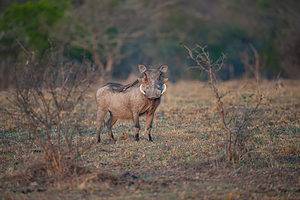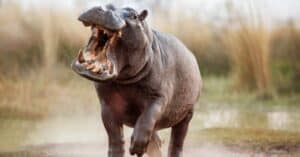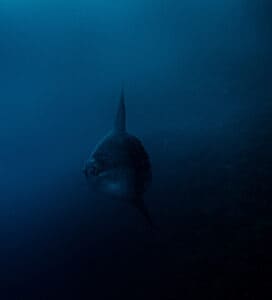
Humans love stripes so much, they use them in interior décor, fashion, and architecture. Sometimes, they even use specific animal prints, further spreading the uniqueness of wildlife throughout the world for more to see. Discover 10 animals with stripes and learn why some animals have them and others don’t!
1. Tiger
Scientific name: Panthera tigris
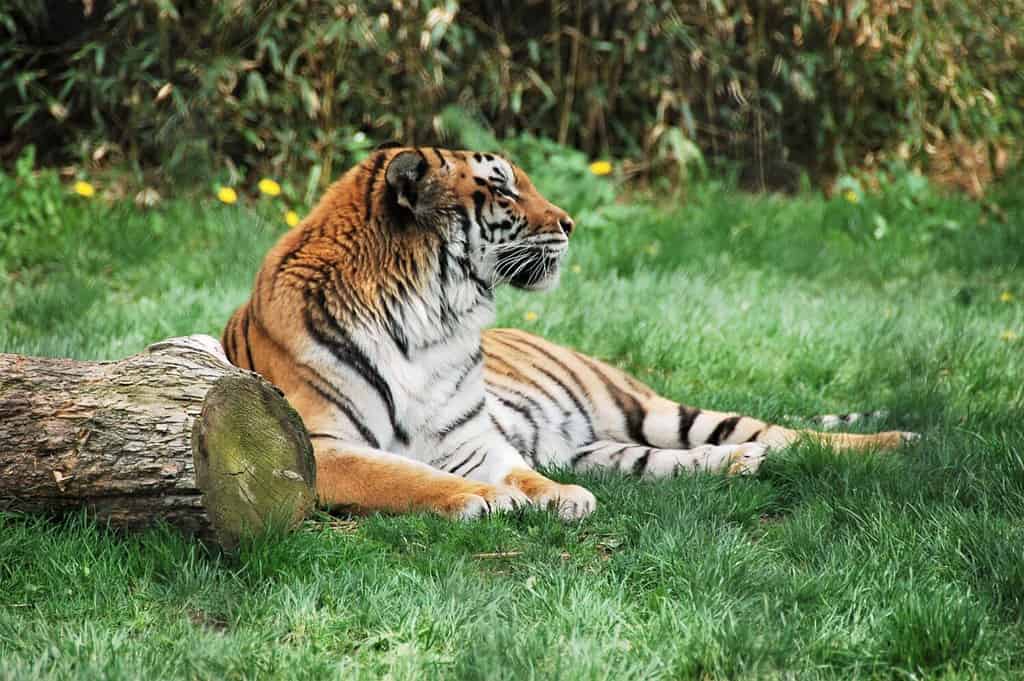
Tigers have black stripes that travel down their orange-ish coats.
©Januva/Shutterstock.com
Although there are multiple subspecies found throughout the world, all tigers fall under the same primary species. These cats are the largest of all the big cats and are easily recognized by the black stripes that travel down their orange-reddish coats. Their bellies are white and their markings, though similar on each tiger, are never the same.
2. Plains Zebra
Scientific name: Equus quagga
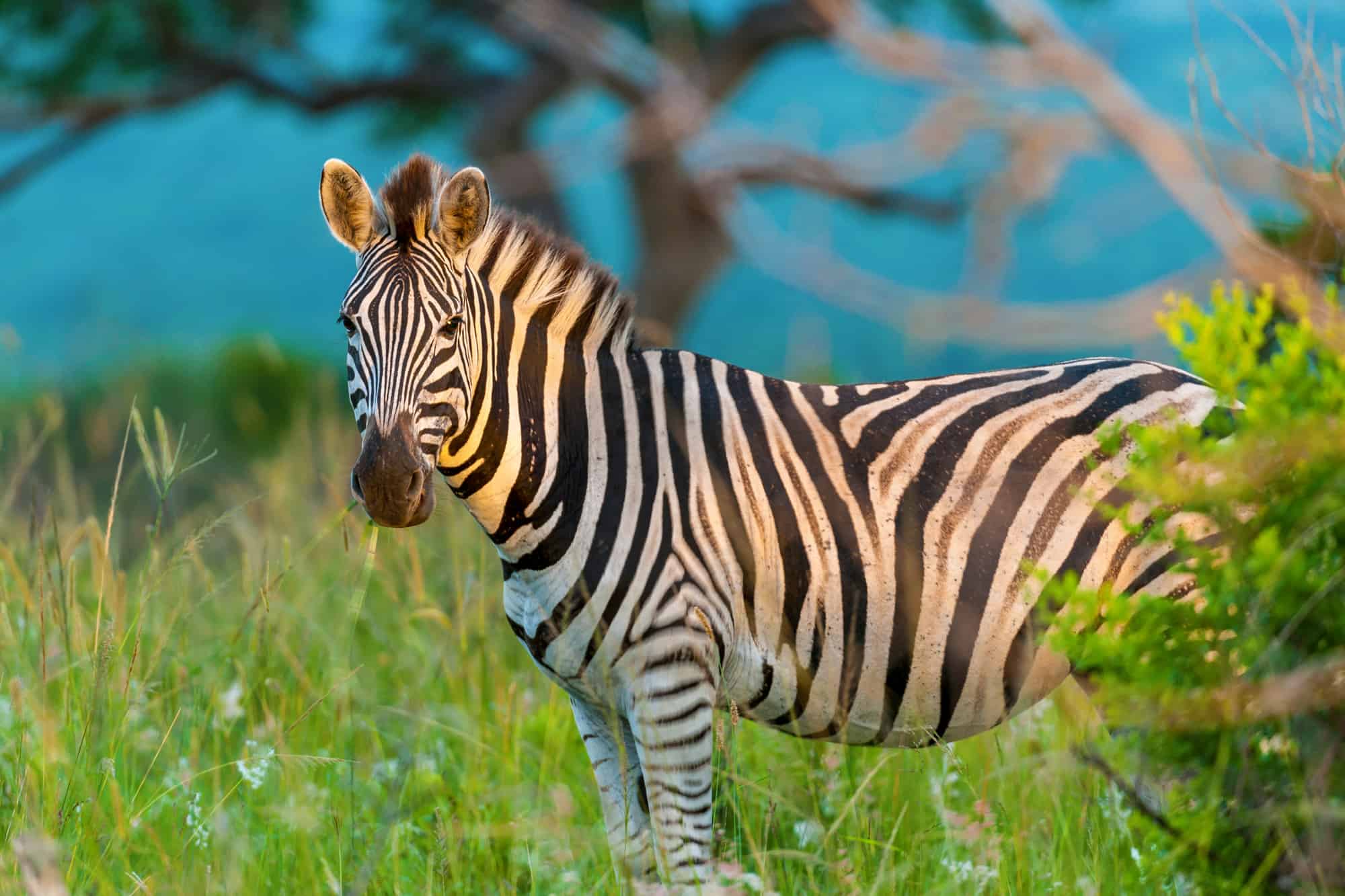
Zebra stripes are different for each zebra.
©Roger de la Harpe/Shutterstock.com
The plains zebra is the most common of the three zebra species. It’s distinguished by the black and white striped patterns throughout its body. The stripes don’t just go in one direction. While some travel down their bodies, others veer left and right, creating a unique pattern all their own. Like tigers, no two zebras look exactly the same.
3. Striped Hyena
Scientific name: Hyaena hyaena
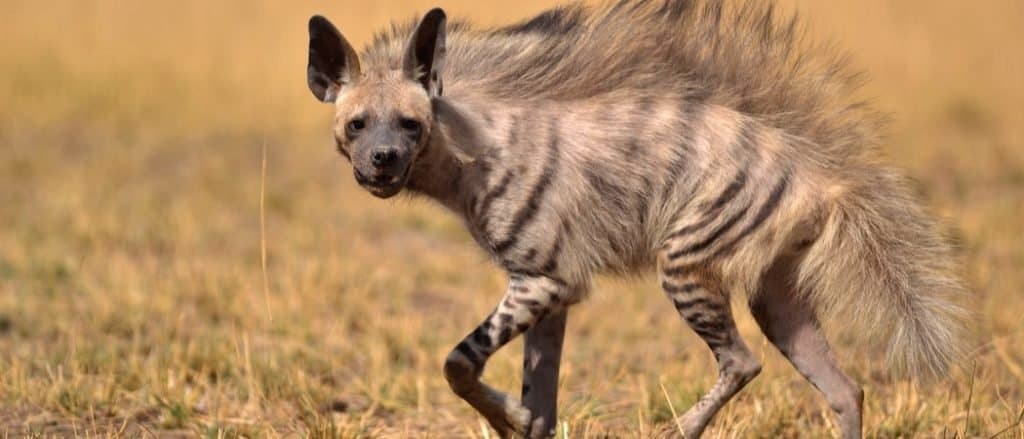
Striped hyenas are one of the top 10 animals with stripes.
©Dr. Meet Poddar/Shutterstock.com
Striped hyenas have stocky builds on long legs. Their torsos are short compared to their legs and they have black stripes on their coats. Their coat color differs and may be gray, brown, or more of a golden yellow. However, their ears and muzzles are always black, matching their stripes. They are smaller than their counterparts, the spotted hyenas.
4. Coral Snake
Scientific name: Elapidae
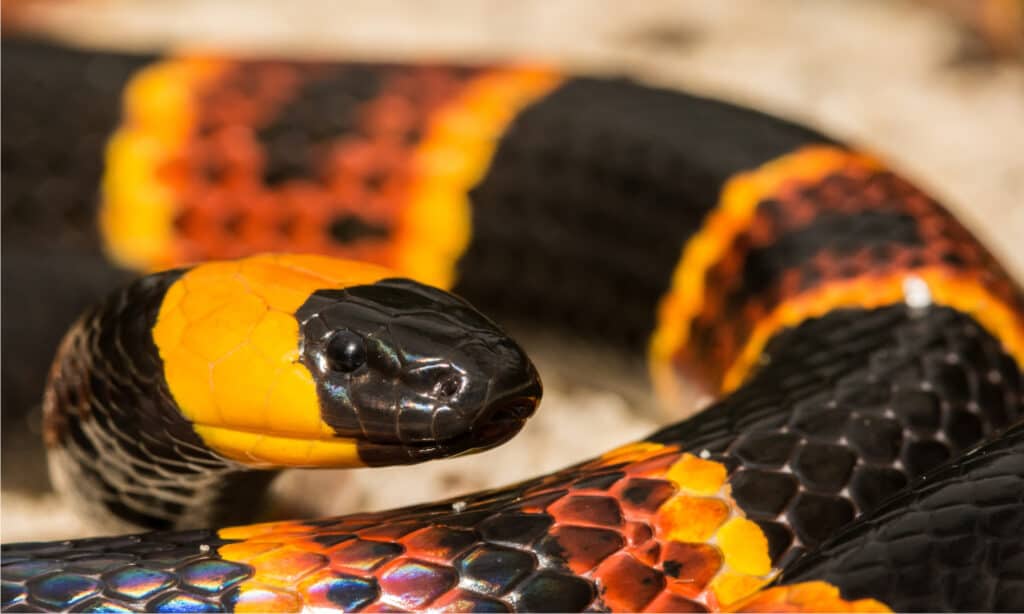
Coral snakes can have yellow, black, or red stripes.
©Jay Ondreicka/Shutterstock.com
Coral snakes are bright, and their stripes connect to form rings. They may be yellow, black, or red and their heads have a yellow band just behind their black snouts. These are dangerously venomous and from the side, appear striped. Sometimes the rings connect all the way around, but not always!
5. Wild Cat
Scientific name: Felis silvestris
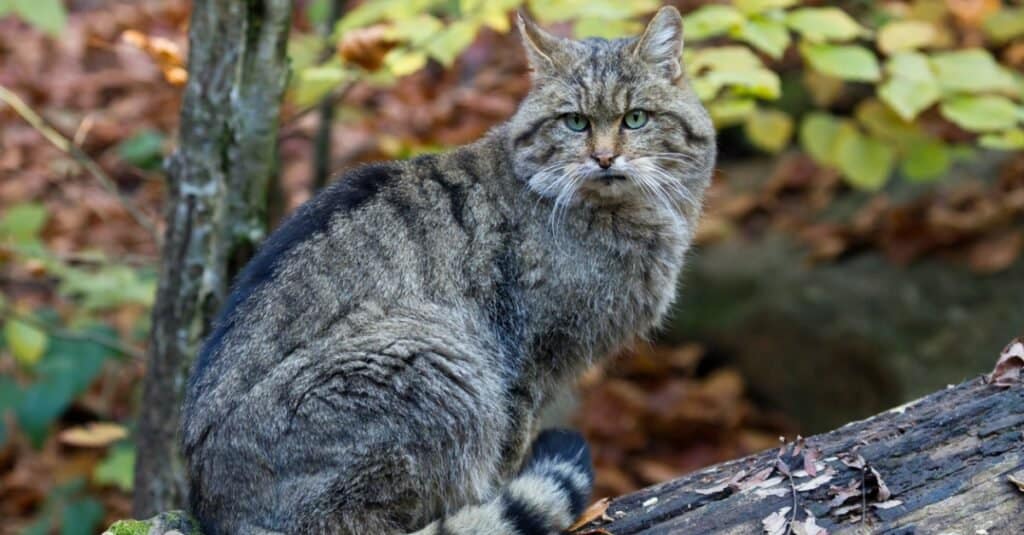
Wildcats are one of the top animals with stripes.
©iStock.com/pum_eva
Wild cats are small cats that live in both Africa and Eurasia. There are a couple of subspecies that fall under the primary species. Some closely resemble domesticated cats with soft, short fur. They are usually a greyish or brownish color and have distinctive stripes on their bodies followed by a bushy tail.
6. Zebra Spider
Scientific name: Salticus scenicus
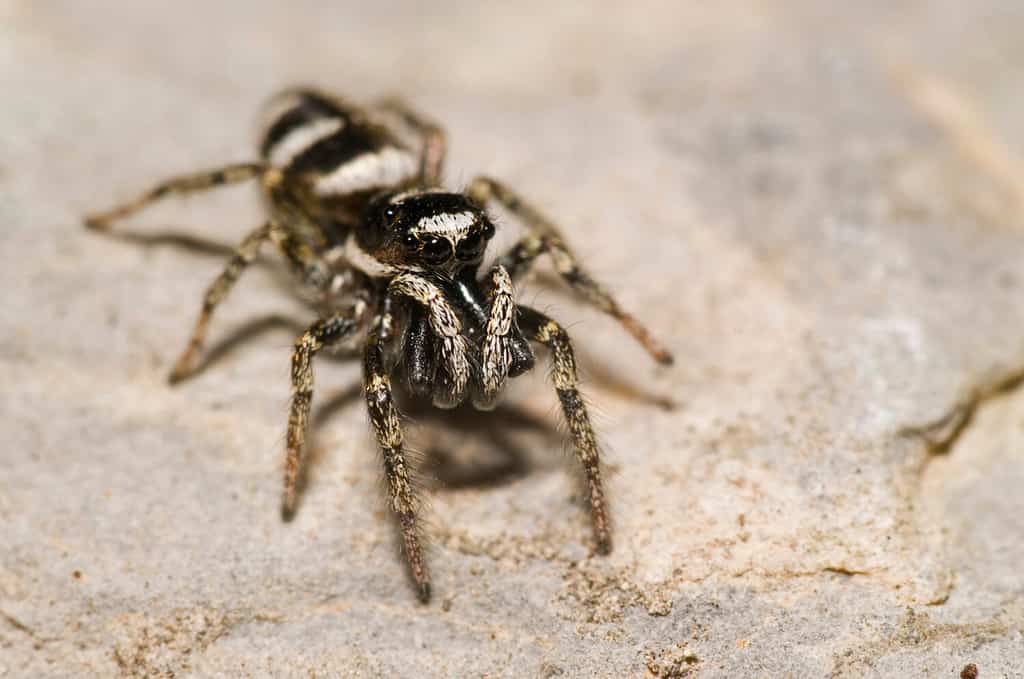
Zebra spiders have 3-4 white stripes on their tiny bodies.
©Federico.Crovetto/Shutterstock.com
Zebra spiders are tiny, reaching only up to seven millimeters in length, with the males a bit shorter than the females. On their abdomens, there are typically three (maybe four) white stripes. The stripes closer to their abdomen are solid whereas the stripes in the center are apart, showing the black base color in between.
7. Four-Striped Grass Mouse
Scientific name: Rhabdomys pumilio
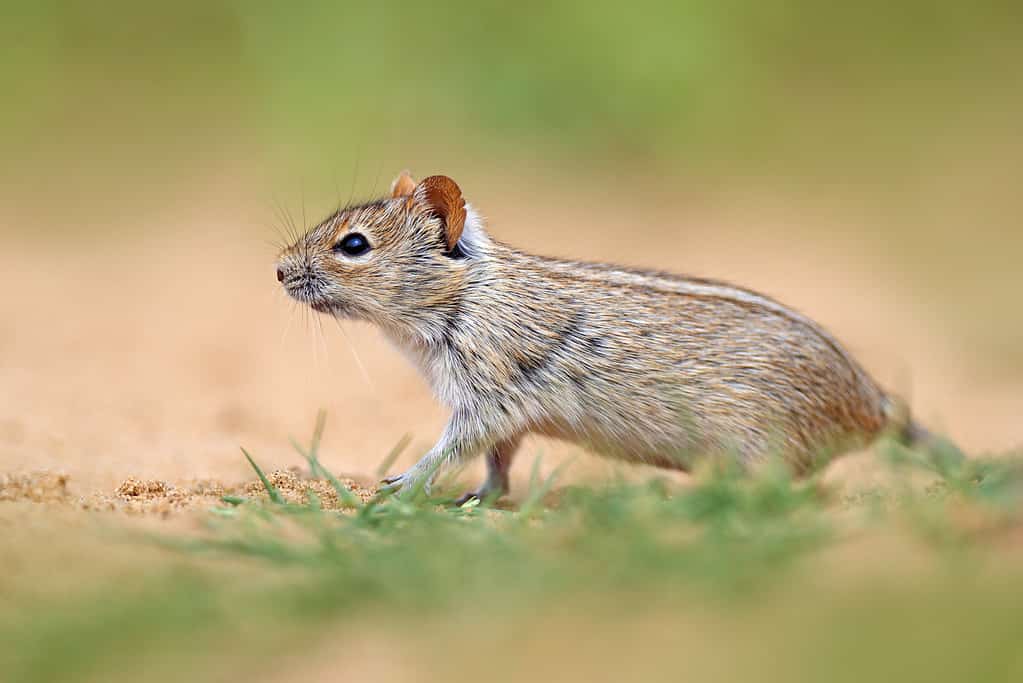
Four-striped grass mouse has four stripes running down its back.
©iStock.com/Ondrej Prosicky
Sometimes, it’s all in the name! The four-striped grass mouse has exactly four stripes that run down its back. The colors of the stripes vary. Some are darker brown while others are a bit lighter, incorporating both gray and white. The mouse’s belly is also lighter, and the rest of its body is a grizzled brownish color.
8. Eastern Chipmunk
Scientific name: Tamias striatus
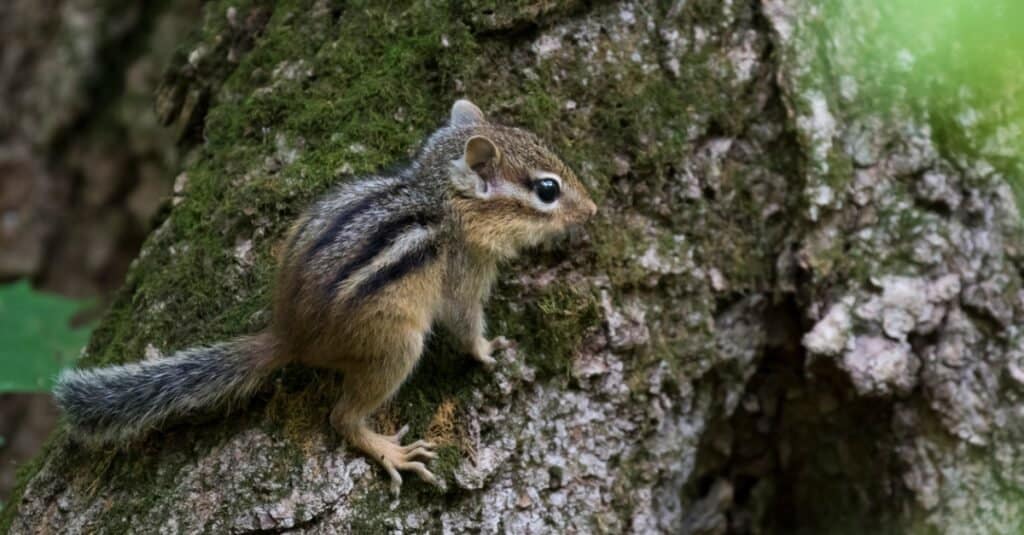
Eastern chipmunks are one of the top animals with stripes.
©iStock.com/mirceax
Eastern chipmunks have five stripes that go down their backs. They’re usually black or dark brown. The rest of their fur is kind of reddish-brown, but their bellies are lighter, more of a creamy white color. Their tails are darker than their bodies but not by much.
9. Striped Marlin
Scientific name: Kajikia audax
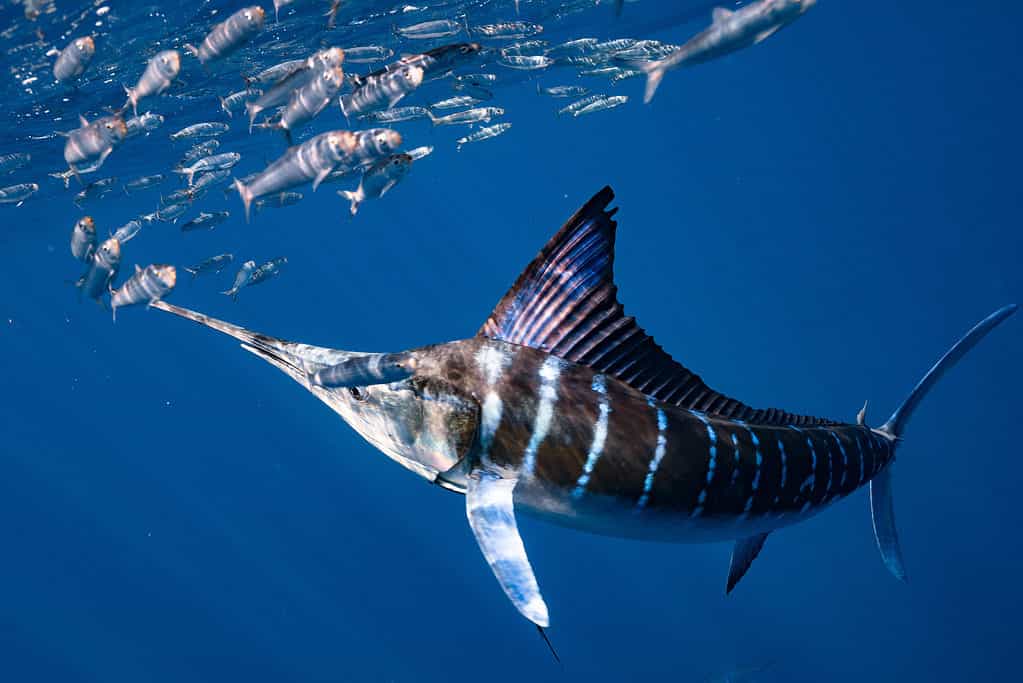
Striped marlins have stripes on top of their bodies.
©Earth theater/Shutterstock.com
Striped marlins live in the sea and are distinguished by their pointed, protruding jaws. The stripes on their bodies contrast with their elongated jaws, showing up vertically on the sides of their bodies. These stripes are light blue, and each marlin has between 12 to 20 stripes on each side. On the tops of their bodies, striped marlins are kind of a purplish blue and their sides are white and silvery.
10. Striped Skunk
Scientific name: Mephitis mephitis
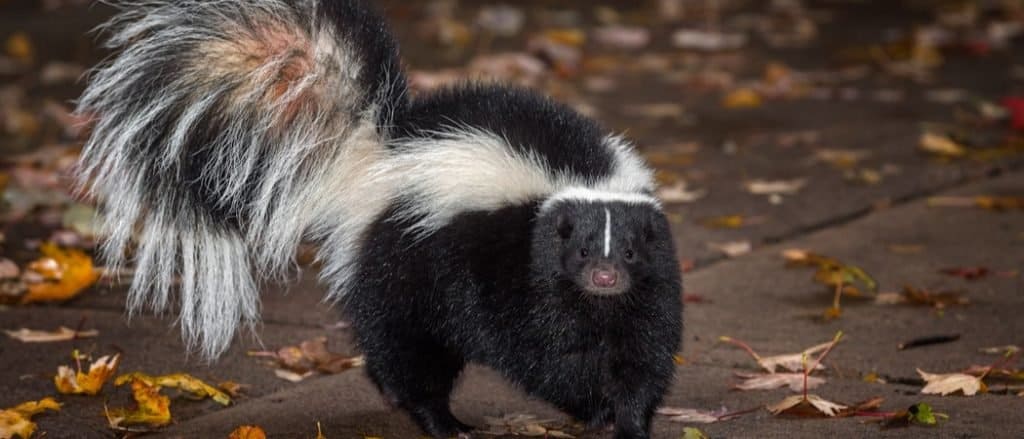
Skunks are distinctive in their stripes and smell.
©Geoffrey Kuchera/Shutterstock.com
With striped skunks, the colorations are easy to detect. They’re black all over except for two distinctive stripes that run along their backs and onto their tails. There’s a final stripe on the center of the skunk’s head — it’s white and small, aligned between the eyes.
Why Do Some Animals Have Stripes?
Generally, it’s understood that animals have stripes because they benefit them in some way. For instance, stripes can help animals camouflage within their natural environment to hide from predators or sneakily ambush prey. This is true for other types of markings as well, like spots and splotches.
Plains zebras stand out in their environments, so there is another reason why they have those black and white stripes. Scientists have been wondering about this for over 100 years and have come up with some answers. Flies don’t land on striped surfaces and the white and black contrast helps with thermoregulation.
Summary of 10 Animals with Stripes
| Striped Animal | Fun Fact | |
|---|---|---|
| 1 | Tiger | They are the largest of the big cats |
| 2 | Zebra | Zebras’ stripes don’t go in just one direction |
| 3 | Striped Hyena | They are smaller than spotted hyenas |
| 4 | Coral Snake | Highly venomous – their stripes don’t always meet |
| 5 | Wild Cat | Wild Cats aren’t much larger than domestic cats |
| 6 | Zebra Spider | These tiny spiders only have three or four stripes |
| 7 | Four-Striped Grass Mouse | Grass mice are active mornings and late afternoons and rest during the mid-day heat |
| 8 | Eastern Chipmunk | These striped cuties have large cheek pouches that they use to transport nuts to their burrows |
| 9 | Striped Marlin | Marlins can have up to 20 stripes |
| 10 | Striped Skunk | Striped skunks have a slender stripe between their eyes |
The photo featured at the top of this post is © iStock.com/Thinker360
Thank you for reading! Have some feedback for us? Contact the AZ Animals editorial team.



